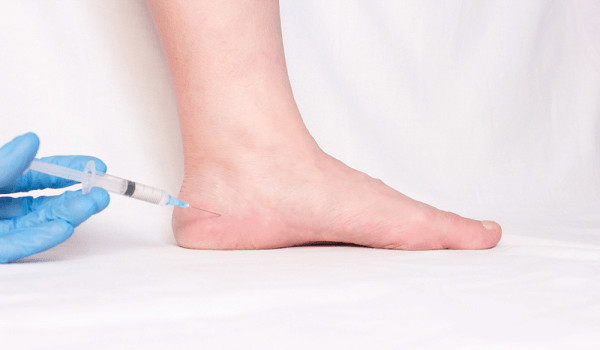Can Plantar Fasciitis be Completely Cured?

Are you experiencing pain in the bottom and the arch of the foot that gradually increases over time? Is it usually worse in the morning when you get up? If yes, you may be suffering from plantar fasciitis, an inflamed ligament caused by overexertion of the feet. How do you know when plantar fasciitis is gone for good? Continue reading to learn more about this condition and its possible treatments.
Plantar fasciitis is the condition where the fascia, or band of tissue that extends from the heel to the toes, becomes irritated and then swollen. People who have faulty foot structure, such as those with overly flat or high-arched feet, are more prone to this condition.
The type of shoes you wear may also put undue strain to the arch of the foot. Wearing high heels for long periods of time damages the plantar fascia, causing heel pain.
Similarly, physical activities and active lifestyle may lead to plantar fasciitis. If your job requires you to stay on your feet for long hours, you may cause wear and tear to your ligaments. The obese are also likely to suffer from the increased pressure on their feet due to their weight.
While heel pain may often be attributed to plantar fasciitis, it is best to be properly diagnosed by a doctor to be sure. Other causes of pain in the arch of the foot may be fracture, nerve irritation or tendonitis.
Once the doctor eliminates other probable sources for your pain and identifies plantar fasciitis as the main cause, early treatment should be the next step.
One recommended first aid is taking pain relievers to reduce the pain and swelling. Heel and foot stretching exercises may also help. When sleeping, night splints may be used to stretch the injured foot.
As much as possible, it is advisable for patients to take a week’s rest. If not, they should wear shoes with good arch and heel support to prevent further damage to the ligaments. Heel pads may also provide a cushioning effect to the foot.
Applying ice to the painful area twice a day may also ease the discomfort. If these do not work, injecting steroids into the heel may be recommended, or even surgery for the worst cases.
Almost ninety percent of people suffering from plantar fasciitis can be treated without the need for operation. How long they will be back to their normal routine, however, may vary from one person to another.
For some, the condition is little more than an irritating pain every morning that goes away within the day. For other people, plantar fasciitis may be disabling, lasting from nine to twenty four months.
Some doctors have claimed that the damage in the fascia ligament never totally goes away. It will either worsen or remain as it is. The only possible thing to do is to prevent further harm to the foot. Due to the wear and tear in the tissue, the pain may also recur. To answer the question how do you know when plantar fasciitis is gone for good, it is best to consult your doctor regularly after undergoing certain treatments.





